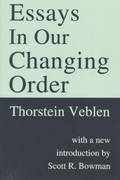h} Now consider what happens when the farmers make their own decisions. To start, suppose that farmer 1 knows that farmer 2 has a high demand. As a result, he expects farmer 2 to build a dike at least as high as his own. Therefore, farmer 1 uses the rst line of his demand formula {D1 10 7.1} to decide on how tall a dike to build. Remembering that farmer 1's individual cost is c = 6, what level of 21 does he choose? Farmer 2'. observes the choice made by farmer 1, and decides on the level of z; accordingly- To understand his decision, graph his demand curve for 7.2 using both nes of the second formula above {graph the zero part as well as the formula in the first line, connecting them with a vertical line}. Note that to draw the graph, you must plug in the 21 value that you computed in part {b}. Look carefully at your graph, and think what it tells you about the best decision for farmer 2. What level of 22 does he choose? 1. In the voluntary-contribution model considered in the lectures, the public good was national defense, and 2 was measured by the total number of soldiers. This total was in turn equal to the sum of the soldiers hired by both consumers, so that 2 = 21 + 22. We saw that the consumers acting alone hired too few soldiers, so that 2 was less than 2\". Consider now the issue of voluntary contributions to a different type of public good: ood prevention. Imagine that two farmers cultivate land in a narrow valley next to a river. Each farmer builds a dike {i.e., an embankment) along his part of the river in order to prevent ooding during the rainy season. The height of farmer 1's part of the dike {measured in feet) is 21, while the height of farmer 2's part of the dike is 22. If farmer l wants to add extra height to his part of the dike, the cost is c for each extra foot of height added. The same cost applies to farmer 2. Since water comes over the dike or the Fmresr point, the ood prevention consumed by the farmers depends on the height of the lmresf portion of the dike. Letting 2 denote ood prevention, it follows that 2 = min{21, 22}. In other words, the prevention provided by the dike is equal to height of the lowest part. Obviously, this situation is quite different from case of the national defense. Given these assumptions, farmer 1's demand curve for 21, which gives his valuation of an extra foot of height for his part of the dike, is given by D1= 11321 if21522 = 0 if 21 3' 22 Note that an extra foot of height is worth something to farmer 1 as long as the extra foot improves ood protection (as long as 21 5 22]. Once 21 becomes larger than 22, further increases in 21 have no value. Similarly, farmer 2's demand curve for 22 is given by D), = 16 22 ifZ}, S 21 =0 if22}21 Farmer 2 has the larger demand because his land extends farther back from the river, making his losses larger in the event of ooding








